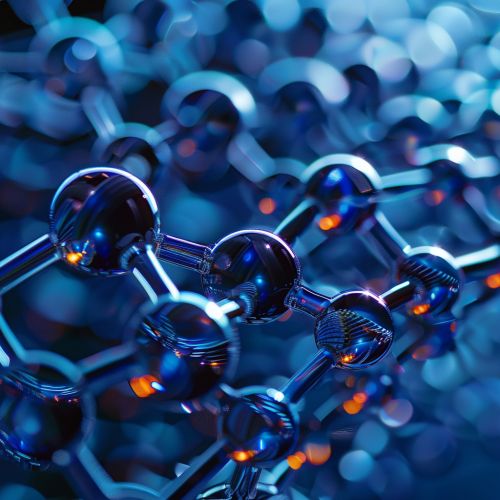Poly(lactic-co-glycolic acid)
Introduction
Poly(lactic-co-glycolic acid) (PLGA) is a copolymer composed of two different monomers, lactic acid and glycolic acid. This copolymer is a key player in the field of polymer science and biomedical engineering, due to its unique properties and wide range of applications. PLGA is a biodegradable and biocompatible polymer, which makes it suitable for use in medical applications such as drug delivery systems, tissue engineering, and medical implants.


Chemical Structure
The chemical structure of PLGA is composed of two different monomers, lactic acid and glycolic acid. These two monomers are linked together through an ester linkage, forming a copolymer. The ratio of lactic acid to glycolic acid in the copolymer can be varied to control the degradation rate of the polymer, as well as its mechanical properties. The molecular weight of PLGA can also be controlled during the polymerization process, which further allows for customization of the polymer's properties.
Synthesis
PLGA is synthesized through a process known as ring-opening copolymerization. This process involves the reaction of the cyclic dimers (a type of molecule composed of two monomers) of lactic acid and glycolic acid, known as lactide and glycolide respectively. The polymerization process can be initiated using a variety of different catalysts, including tin(II) 2-ethylhexanoate and tin(II) alkoxides.
Properties
PLGA is a biodegradable and biocompatible polymer, meaning it can be broken down in the body and is not harmful to living tissue. The degradation rate of PLGA can be controlled by varying the ratio of lactic acid to glycolic acid in the copolymer. PLGA with a higher ratio of lactic acid degrades slower than PLGA with a higher ratio of glycolic acid. The mechanical properties of PLGA, such as its strength and flexibility, can also be controlled through the ratio of lactic acid to glycolic acid.
Applications
PLGA has a wide range of applications in the field of biomedical engineering. One of the most common applications of PLGA is in drug delivery systems. PLGA can be used to encapsulate a drug, allowing for controlled release of the drug over time. This can improve the efficacy of the drug and reduce side effects. PLGA is also used in tissue engineering, where it can serve as a scaffold for cell growth. Additionally, PLGA is used in the production of medical implants, such as sutures and orthopedic devices.
